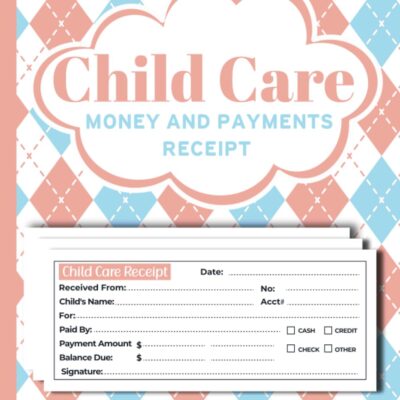
Good day, guardians! You’re in good company, assuming you’re exploring the occasionally precarious waters of Positive Discipline. Many of us need to direct our children in the correct direction. Yet, we have a questionable view of the most capable strategy to do it without relying upon standard disciplines. That is where positive discipline comes in! Everything unquestionably revolves around showing jokes with affection and tolerance, assisting them with gaining from their errors rather than simply feeling rebuffed.
In this essay, we will explore positive discipline and provide pragmatic advice to help you implement it. How about starting this trip to raise happy, conscious children?
Understanding Positive Discipline
All in all, what precisely is positive discipline? Consider it a kinder way to direct your kid’s behavior. Rather than zeroing in on discipline, it underscores education. Positive discipline assists youngsters with understanding why their activities matter and how they can pursue better decisions.
How does this vary from conventional discipline? Standard strategies often incorporate results that can make kids feel terrified or furious. Positive discipline, of course, creates a safe space for learning and improvement. It urges youngsters to mull over their exercises and the vibes of others, which is truly massive for their near and dear social development.
The benefits? They’re huge! Kids who experience positive discipline are more specific, have better relationships with others, and are more ready to feel responsible for their exercises. Isn’t that what we need to arise for our children?
Critical Principles of Positive Discipline
Now that we understand positive discipline, let’s break down some fundamental principles to help you implement it.
Connection Before Correction
Our relationship with our youngsters should precede the direction we can give them. Young people who experience security and love are undeniably more responsive to learning.
This is the way to fortify your bond with them:
Getting to know each other is vital to having a good time. This time together fortifies your bond and advances trust, whether you’re perusing a book or playing a game.
The summary demonstrates a keen interest in what your child has to say. Learn more about their regular workout routines and assist them in expressing their feelings. As a result, they feel both valued and critical.
Setting Clear Expectations
When kids know what to expect, they do well. Setting clear rules is very important. How to do it:
For example, it may be essential to remind small kids to share and to educate young people about curfews. Frame the rules.
Examine how huge the plans are. Utilizing fundamental language assists messes around with understanding. Reword “Don’t hit!” to “We don’t hit since it harms others.”
Encouraging Problem-Solving
Don’t just tell your kids what to do; help them figure out what to do. This teaches them to be responsible and think critically. To get people to solve problems, do these things:
Open up about things. If your child acts up, talk to them about it. You can ask, “What could I do differently next time?” They can learn from it and think about it.
Please give them a choice: When discussing behavior, give people options. If they don’t want to clean their room, ask them, “Would you like to do it now or after dinner?” They feel like they’re in charge when that happens.
Strategies for Implementing Positive Discipline
Now that we’ve covered the principles let’s get into some practical strategies you can use daily.
Use Positive Reinforcement
Positive feedback means noticing and rewarding good behavior. This gives kids a reason to keep doing those good things. How to use it correctly:
Provide specific praise: Instead of just telling them “good job,” tell them what they did right. As an example, “I loved how you helped your sister!” Insight helps them understand the actions you want to see more of.
Establish a system of rewards: Consider using a sticker chart. When your child observes the guidelines, they get stickers. When they get a specific number of stickers, they get a treat. This makes appropriate conduct more tomfoolery!
Redirecting Behavior
Sometimes, kids need a little redirection. Instead of saying “no,” guide them toward a more positive action. Here’s how to redirect effectively:
Try to notice what causes bad behavior. If your youngster acts out when bored, be proactive and offer entertaining things ahead of time.
Should your child act out of control, give them another activity to concentrate on. For instance, if kids toss toys, advise them to go outdoors and kick a ball instead. This will guide their energies toward a positive direction.
Modeling Desired Behaviors
Remember, kids glean some significant experience by watching us. It would help if you showed those ways of behaving if you believe they should be patient and kind. This is the way to set a genuine model:
Show persistence in your cooperation, particularly during testing minutes. When your kid sees you keeping even-headed, they will answer the same way. Examine your sentiments and show sympathy towards others. They’ll probably reflect that conduct when they see you consciously dealing with circumstances.
Handling Challenges with Patience
Even with positive discipline techniques, challenges are bound to come up. Here are some tips for handling those moments with grace.
Staying Calm During Difficult Moments
It’s common to experience moments of overwhelm. In disciplinary situations, it’s critical to control your emotions. The following are some tactics: Stop and inhale deeply when irritation starts to mount. By taking one small action, you can restore your composure and face the matter with greater clarity. Please take a quick step back; it’s acceptable to be stressed. Tell your child that you need a moment to collect your thoughts before you talk about what happened.
Consistency is Key
Being consistent in your approach to positive discipline is crucial for long-term success. Here’s how to maintain consistency:
- Review Expectations Regularly: Periodically revisit the rules with your child. This helps reinforce their understanding and allows you to address any necessary changes as they grow.
- Follow Through on Consequences: If your child doesn’t follow the rules, following through with fair consequences is essential. Make sure these consequences relate to the behavior in question.
Conclusion
Being a cherishing and caring guardian while utilizing positive discipline is an extraordinary method for aiding your children learn and develop. Zeroing in on association, clear principles, and critical thinking can assist your children with becoming capable and deferential.
Recollect that it’s sufficiently not to fix their way of behaving; you actually want to show them important abilities that will help them however long their reality might last. Showing friendship and tolerance can lay out more grounded associations with your kids and set them up for progress as guardians.
Call to Action
Look at a few incredible books or studios to dive deeper into positive discipline. There is an abundance of assets available to help you nurture your adventure.
Hi, we need to hear from you! Leave a comment with your tactics and experiences. We should establish a steady local area where we can all learn and develop as guardians!
If you want to learn my #1 SmartyPants Kids Multivitamin Gummies, Click Here Now.





